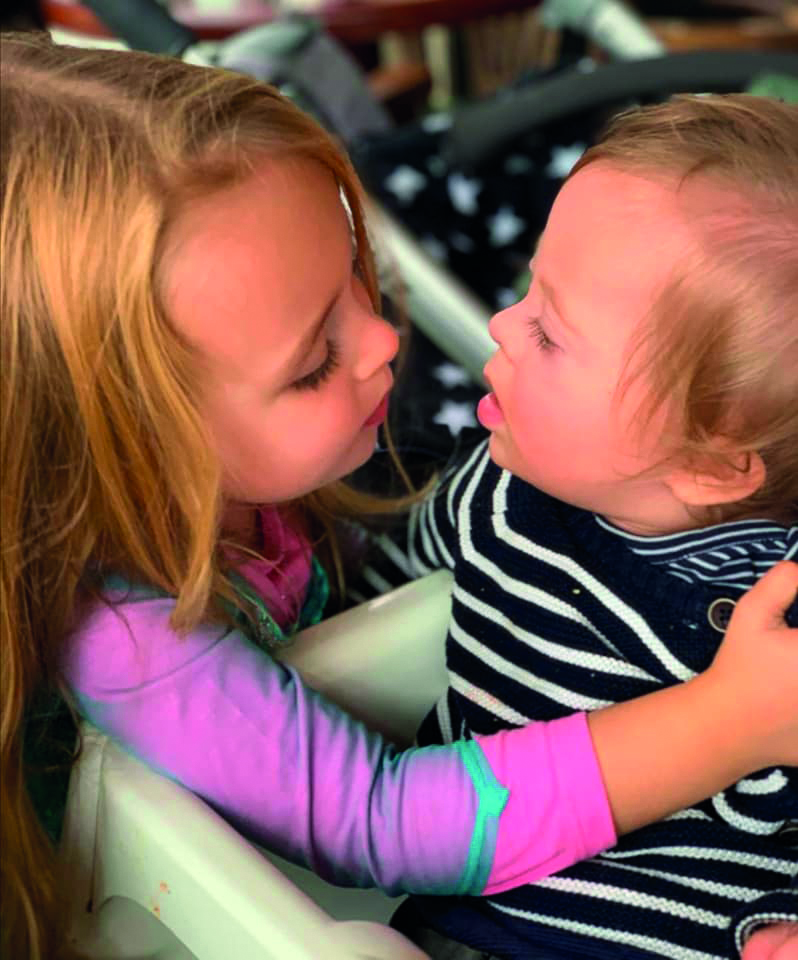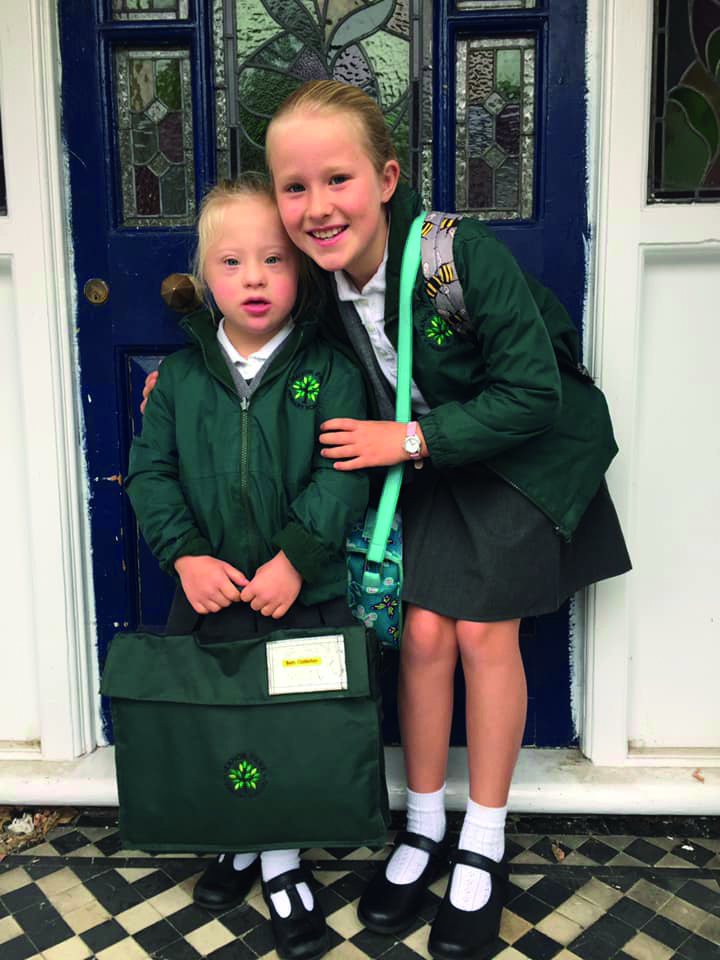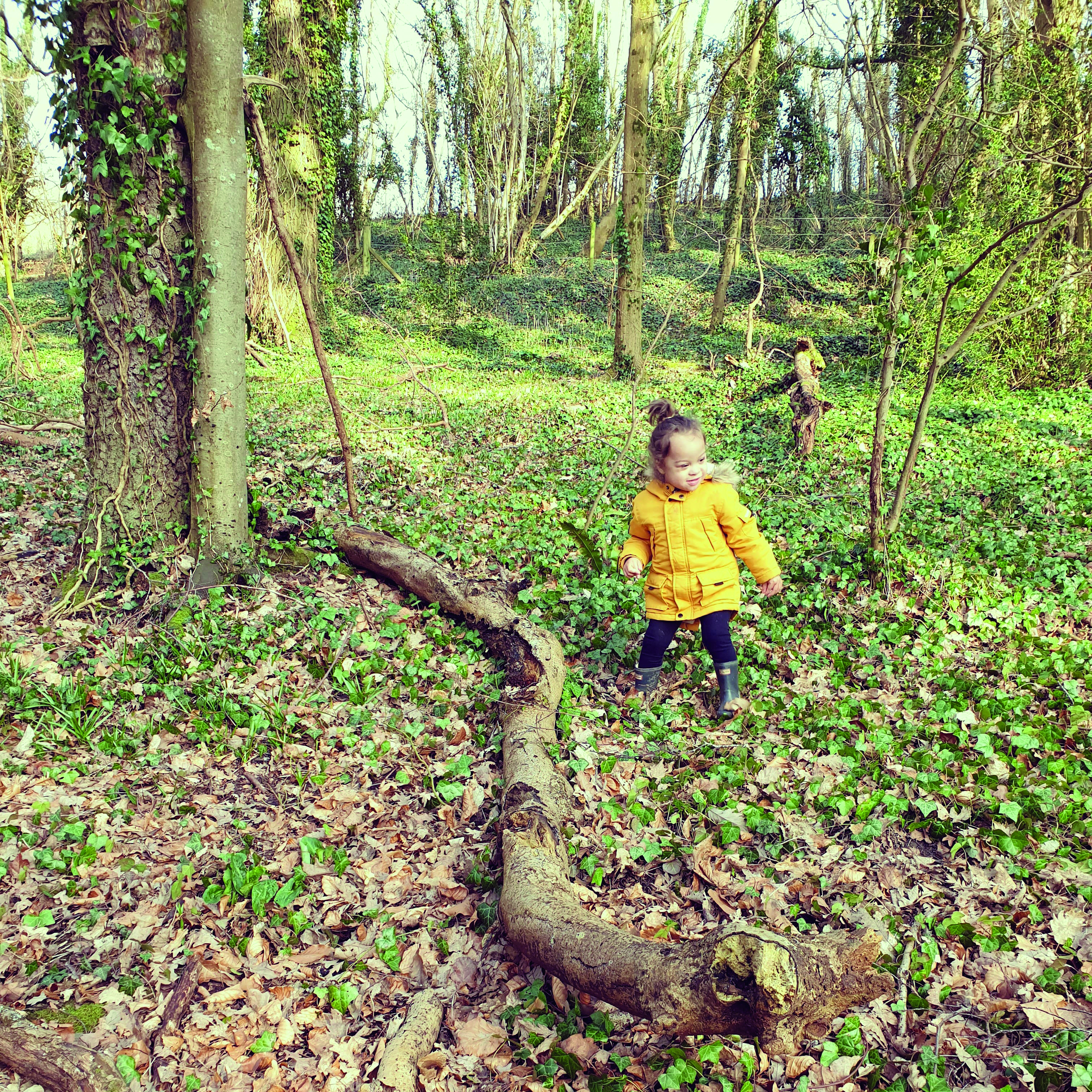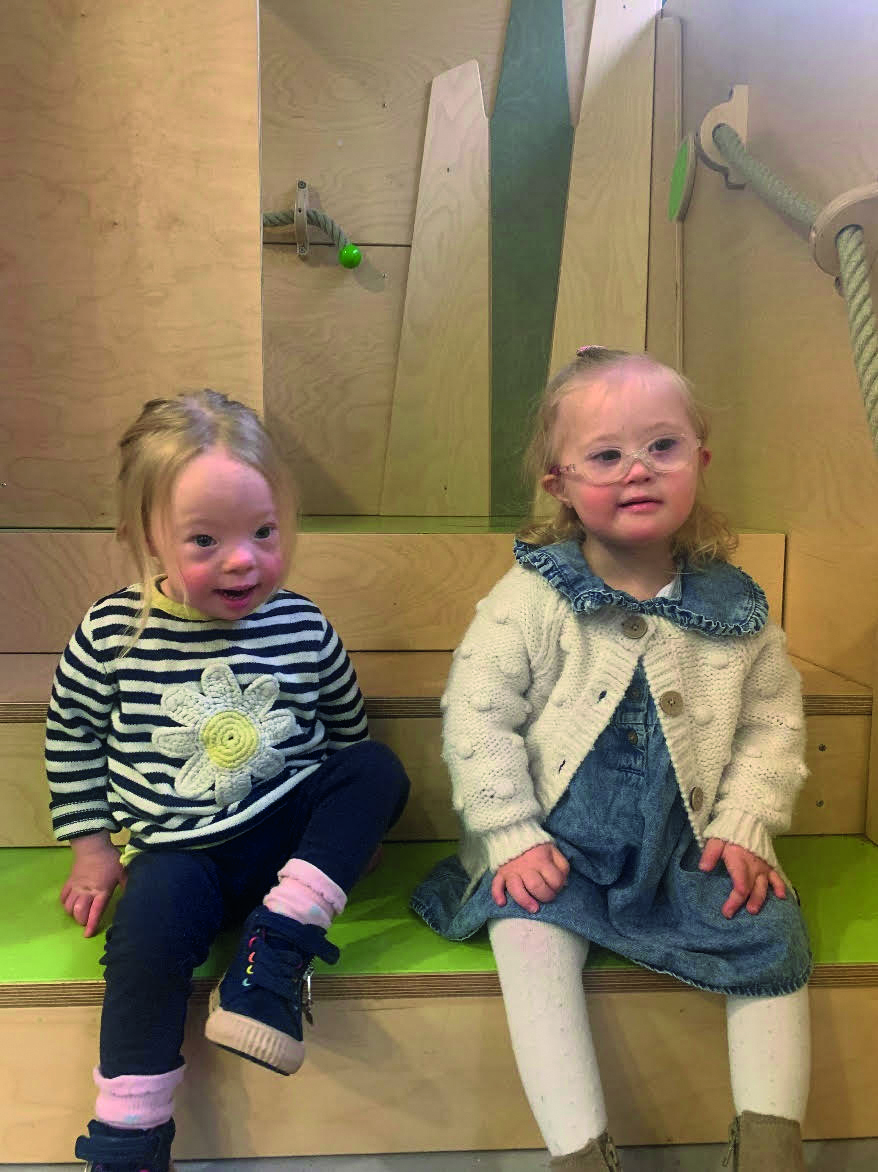
In 1929, the life expectancy of someone with Down’s syndrome (DS) was just nine years. Today, it is 60 years. Advances in healthcare have been the key driving force behind the dramatic leap in lifespan, with an estimated 15 to 20 per cent of children with DS requiring surgery for heart defects that were inoperable before the advent of paediatric cardiology in the 1980s.
In the past 40 years alone, the outcomes for people with DS have improved beyond recognition. In the 1960s, newborns were often sent to institutions, where they would live unstimulating, unchallenging lives until their health got the better of them.
Today, people with DS are part of society, modelling for big brands (see Rio’s case study) and acting in popular TV dramas.
Years of campaigning and scientific research are finally paying off. People with DS are living long, healthy, fulfilled lives. And the Government is finally taking notice. MP Dr Liam Fox has drawn attention to the fact that people with DS are routinely outliving their parents and that they need to have their needs recognised. He is using a Private Member’s Bill to introduce world-leading legislation to ensure proper health, education, housing and social care provision for people with DS.
England’s Down Syndrome Bill has passed its third reading and is anticipated to become law on this month’s World Down Syndrome Day (21 March), making sure that provision is available for those with DS from birth all the way through to adulthood.
MEETING THEIR NEEDS
Each child born with DS has a unique set of health needs, the most common being congenital heart disease, which affects almost 50 per cent of DS babies at birth. Some heart defects are minor and can be treated with medication, but others require surgery.
But of the 47,000 people in the UK with DS, there are some similarities. They are all born with an extra chromosome, chromosome 21, and they will all have some level of learning disability.
‘There are no hard and fast rules about the level of support they will need,’ explains a Down’s Syndrome Association (DSA) spokesperson. ‘They will generally take longer to reach developmental milestones and should receive early intervention to help guide them.’
According to DSA, one or two babies are born with the condition in the UK each day, accounting for approximately one in 1,000.
Other common medical conditions associated with DS include vision problems, hearing loss, underactive thyroids and being more prone to chest infections.

LEARNING PROFILE
Children with DS vary widely in their development. Most have mild or moderate intellectual disabilities, but some – about 15 to 20 per cent – have more significant delays and complex needs.
‘Life is completely different for the families of children with Down’s syndrome who are average in their range of progress, as opposed to those who are more severely delayed,’ explains Sue Buckley, international expert in the development and education of children with DS and founder of Down Syndrome Education International (DSE).
In recent years, there has been significant interest in the number of children who also have autistic profiles. Buckley says, ‘Estimates vary, but children with Down’s syndrome who get an additional diagnosis of autism are as high as one in five. And these children do have significantly greater needs.’
She adds, ‘The more delayed, the more likely there are behavioural issues, because the child can’t communicate.’
SCIENTIFIC RESEARCH
Research informing health professionals, parents and practitioners on ways to support children with DS is growing (see Further information). ‘Listing all the areas of weaknesses can read negatively, but we need to start there because the more we know about what’s holding children with Down’s syndrome back, the more effectively we can intervene,’ says Buckley.
‘The reality is, many children arriving in nursery have significant spoken language delays. So using the resources available and intervention techniques will be beneficial for them, too.’
A key strength for children with DS is their social awareness and social interactive skills. From birth, they will make eye contact, smile and repeat gestures. According to Buckley, educators need to be aware of how adept they are at picking up on visual cues because this can set them up for later behaviour issues.
She adds, ‘They often become quite skilled at manipulating teachers to get them to react. A study with toddlers showed that when the task got too difficult, they distracted the researcher by playing party games.’
Key strengths and weaknesses associated with children with DS include:
- Social engagement It’s important for parents and practitioners to build upon this, as all early learning is done through social interaction, especially learning to talk.
- Fine and gross motor development Delays in motor skills from the first year of life can influence many aspects of children’s development, including oral motor development and feeding (expertise in feeding is important); cognitive development (they are later than their peers to explore objects and the environment); and physical development (mastery of self-help skills and handwriting).
- Speech and language Language development underpins thinking, reasoning, memory, planning and organisational abilities (executive functions). Limited communication increases the likelihood of behaviour difficulties. Signing supports early communication, and the input of speech and language therapy is essential.
- Clear speech production Delayed speech and language skills impact understanding and the use of spoken language. Speech difficulties may be linked to attention, hearing, working memory and speech motor issues.
- Visual short-term memory This is a key strength and highlights the importance of using signs, pictures and print to support all learning in the classroom.
LEARNING TO READ
Only 30 years ago, it was widely thought that children with DS could not learn to read. Today, 10 to 20 per cent of children with DS in mainstream primary schools are reading as well as their typical classmates. ‘We now have some people with Down’s syndrome reading and talking in two languages,’ says Buckley.
She adds, ‘Many children with Down’s syndrome will learn the meaning of new words more quickly than they learn to say them clearly. We recommend that activities to develop and practise spoken language are provided in addition to activities to teach vocabulary and grammar. Slower progress in learning to speak should not prevent opportunities to learn new language skills.’
Studies show that numbers are challenging for children with DS, and many teenagers leave school with limited attainment in basic counting and calculation. It is important to ensure that early number understanding is consolidated with numbers 1-10 before moving on.

OUTDATED PERCEPTIONS
According to Nicola Enoch, founder of Positive About Down Syndrome (PADS), despite ‘dramatic changes’ in social, educational and medical outcomes for people with DS, many maternity units continue to have outdated perceptions and opinions.
‘All too often, expectant women are not given accurate information,’ she says. ‘There is limited contemporary information and support and it’s no wonder that 90 per cent go on to terminate.’
Enoch has been actively campaigning and lobbying for change in the perceptions of people with DS for 15 years, since giving birth to her son, Tom.
In 2019, PADS published Sharing the news, a report tracking the maternity experiences of women who gave birth to a baby with DS.
‘I know I could have been one of those 90 per cent,’ Enoch says. ‘I would have considered termination had I received a definitive result, and that terrifies me. How many women are being misinformed?’
She continues, ‘It is essential that medical professionals understand and accept that Down’s syndrome is no longer a life-limiting condition; that they see beyond the medical model and realise that people with Down’s syndrome lead full and rewarding lives.’
COMMON MISCONCEPTIONS
DS can affect many areas of development, but there is a lot of resources and support available for families.
‘My 17-year-old son is an athlete,’ explains Enoch. ‘He’s strong and physically able, but he started off needing physiotherapy because he had low muscle tone. It’s so important for children with Down’s syndrome to have the right intervention at an early age.
‘Parents of children with Down’s syndrome tell me that they are being turned away from nurseries. While our children may be physically and cognitively delayed, they have the potential to flourish in their local pre-school settings.’
She adds, ‘One of the biggest assumptions is that children with Down’s syndrome can’t be toilet trained until they’re much older. But the reality is that we run a highly successful toilet training programme, #Pants4School, with hundreds of parents successfully toilet training their pre-school child.’
CASE STUDY: Rio Williams

When four-year-old Rio was born, his parents, Kimberly and Ant Williams, were unaware that he had DS. It wasn’t until he was rushed to Bristol Children’s Hospital for emergency surgery for a perforated bowel that he was diagnosed.
Kimberly says, ‘When we found out, we were shocked. It was a lot to take in, but we were dealing with his acute medical needs, which took precedence.’
Rio spent the first few months of life in and out of hospital. At ten weeks old he stopped breathing and Kimberly had to resuscitate him. ‘We discovered that his windpipe was being severely compressed by vessels from his heart. He also had heart defects and underwent major heart surgery just before his first birthday,’ she explains.
Rio was ‘unlucky’, Kimberly says – out of his group of local friends with ‘typical’ DS, the majority of them have never spent a night in hospital. Despite these challenges, Rio loves running around and playing ball games and his mum describes him as ‘crazy’ and ‘hectic’. He has also modelled for big brand names such as Primark and Amazon Smile, a campaign led by Bristol Children’s Hospital charity The Grand Appeal.
Rio struggles to walk for long distances and he is unable to ride a bike or scooter. He predominantly uses Makaton, but he can also use a few words. He takes daily medication and struggles with his airways when he has a cold or virus, but when he is not attending physiotherapy or hospital appointments, he is at Bath Opportunity Pre-School, a setting for children with additional needs.
Kimberly says, ‘He only attends for two short days a week, which is all we can get him in for. And there is no alternative for him, mainly because of his medical needs. Everything’s a fight: for physiotherapy; occupational therapy; speech and language support – and even education. Children with Down’s syndrome need more support – and that’s what we hope the Bill will do – because Rio is already behind his peers with typical Down’s syndrome who are accessing full daycare. And we don’t know at this stage if he will receive the funding he needs to be supported to go to school. So, it’s just not fair.’
Kimberly is thankful for the support she has received though charities like Ups and Downs Southwest, which put her in touch with local families, and Wouldn’t Change a Thing, an online support group (see Further information).
CASE STUDY: Daycare St Martin’s

Daycare St Martin’s in Solihull, Birmingham, currently has two children with DS attending the setting.
Lilly and Agnus [names changed], both two years old, have been at the setting for over a year, after being recommended by another parent whose child with DS attended.
Manager of the 100-place nursery, Jess Dolan, says, ‘We celebrate and embrace all children’s similarities and differences. We have children with Down’s syndrome and other complex conditions and disabilities. And it’s a positive supportive environment for them all.
‘There may be a bit more paperwork involved – for example, we support those who need it, to apply for EHCPs. But it’s great to be involved with different agencies and learn new skills – and parents like the fact that it’s an inclusive environment.’
When Lilly and Agnus were babies, Jess made sure that there was extra support around mealtimes and staff were trained in Makaton.
‘There can be issues around swallowing, as children with Down’s syndrome tend to have longer tongues, so we made sure we had appropriate cups and cutlery. Both girls were slow walkers, so we ensured the room was safe for them to cruise around.
‘And because speech can be inhibited, we use Makaton,’ Jess adds.
Today, both children are ‘thriving’ and can communicate their needs verbally, explains Jess. ‘Developmentally, they’re exactly where they should be. They’re both being toilet trained, using the PADS #Pants4School toilet training method, and they can get themselves around the nursery, sometimes with an extra hand if they need it.’
She adds, ‘Parents shouldn’t be afraid of approaching nurseries – and nurseries should embrace having children with Down’s syndrome.’
CASE STUDY: ST LAWRENCE’S PRIMARY SCHOOL AND NURSERY
At St Lawrence’s Primary school and Nursery in Shropshire, reception teacher Rebecca Watkins, changed the classroom layout to create a workspace for Carl [name changed], who has DS, when he joined aged two.
She says, ‘He loved roaming around the nursery and having access to the continuous provision but we realised he would benefit from a safe, flexible space that he could access at busy times or when he needed to re-centre. In the early days, this was a cosy den with picture books and cushions, but later became a workspace with a table and chair, interesting boxes of activities and a visual timetable. When he went through a difficult phase, this space was particularly useful, and it was one of the strategies we put in place – along with using social story books - to mitigate risk.’
Staff can converse in Makaton sign language and have received training in visual support for children with DS.
A disabled toilet with a changing table and shower was also installed, under recommendation from the local authority. However, this was then used to support Carl’s transition to being toilet trained. ‘He decided he was ready to be toilet trained, aged five, so we supported him and his parents with this and it was successful, says Rebecca. ‘It’s made such a difference to his independence.’
Carl is now in Year 2 and attends forest school, swimming lessons and actively takes part in school productions.
Rebecca adds, ‘We are constantly surprised with what is possible. We underestimated his ability and had to adjust our own thinking and actions, as well as review our provision, to give him the independence he needed.’
FURTHER INFORMATION
- Down Syndrome Toolkit for Paediatric Speech and Language Therapists
- Inclusive Education Guidelines by the National Down Syndrome Society
- Inclusive Education For All – 2022 Campaign
- Sharing the news
- Down’s Syndrome Association
- Down Syndrome Education International
- Positive about Down syndrome
- Ups and Downs Southwest
- Wouldn’t Change A Thing
- DSUK toilet training advice
- New support package for settings to be piloted in April. Email nicola.enoch@positiveaboutdownsyndrome.co.uk
CHILDREN’S BOOKS
- This is Ella by Krista Lee Ewert and Celia Marie Baker









